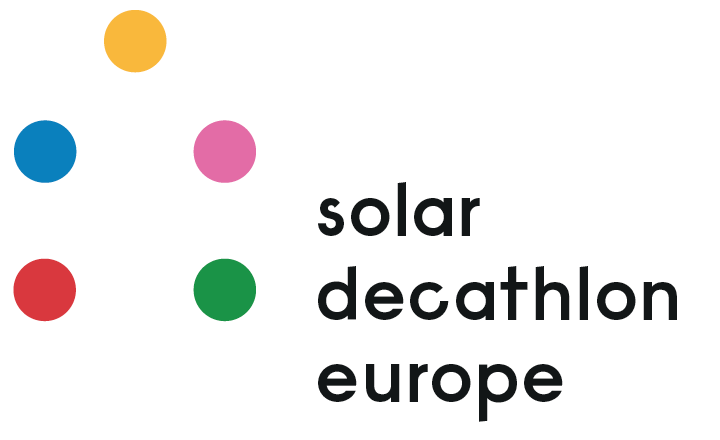Previous questions regarding the SDE25 Call for Cities have been answered. Cities having expressed interest in hosting the SDE25 are invited to send new inquiries to reflect the objective of hosting the SDE in 2026. Every attempt is made to provide concise, clear, and consistent answers. All questions are published in an anonymous manner. Answers are customarily provided within seven days, and published on this website. Please send all inquiries before September 15, 2023 to: questions@energyendeavour.org.
Question 1: Budget Template: Are the structure and categories shown in the Excel template mandatory? Or can the finance workbook be structured based on an approach for a national funding proposal?
Answer: The budget template is provided as a guideline only. Applicants are free to approach their budget according to their organisational structure and financial planning.
Importantly, the budget must include a feasible and highly detailed budget (including funding sources) and fundraising strategy, fulfilling the objectives described in the proposal. The financial structure must be made as clear as possible in the full application.
Question 2: Is the budget of 10 million Euros a requirement?
Answer: No. In the Call for Cities Annex: (Excel spreadsheet), a typical budget template based on previous SDE events is given as a reference. Local costs for labour, site preparation, and in-kind contributions will alter the budget needed to host a successful SDE Competition.
Question 3: What is the specificity of the SDE25 compared to other SD editions?
Answer: Applicants are expected to describe the focus of their goals as it relates to issues they wish to address as hosts for the SDE in 2025. The complete application should identify which contests, if any, would be affected by this focus. The SDE25 reference version of the Rules document will be the basis for the SDE25 Competition, and will be revised to reflect the SDE25 specificity prior to the SDE25 Call for Teams.
Each new SDE edition allows for the development and evolution of the SDE Rules; this is intended to reflect the specificity of the SDE edition and corresponding project requirements. The Energy Endeavour Foundation (EEF) is the custodian and final authority of the SDE(25) Rules.
Question 4: Is it mandatory that SDE25 be held in a big city?
Answer: No, it is not. The EEF seeks a Host City with an appropriate venue for the next SDE, one which will provide surrounding communities with the opportunity to conduct parallel activities and participate in and benefit from its economic and educational impact.
Since one of the most important SDE goals is to raise awareness and educate the general public, this event should stimulate the local economy by attracting visitors from the Host City and its surrounding region, and by implementing communications strategies and actions beyond the Host City.
Question 5: Is it mandatory that the entire budget come from a public administrative entity tied to the Host City?
Answer: No, it is not. On the contrary, it is important to demonstrate support from national, regional, and local governments, including those from city authorities and private sectors, by letters of commitment containing clear mentions of financial cash or in-kind contributions.
Applicants should specify which public and / or private institutions, organisations, or bodies would be represented in the proposed team, as well as their respective levels of authority.
Question 6: When and how do applicants have to officially demonstrate their interest in being the SDE25 Host City?
Answer: Applicants need to send their Letters of Intent by November 15, 2022. Applications are due on January 13, 2023. Please refer to Section 1.22 in the Call for cities document for more details regarding application, assessment, and designation timetable.
Question 7: Can the construction / assembly phase take longer than the customary 14 days?
Answer: The SDE is characterised by the unique format in which the Decathletes gather in-situ to build simultaneously, in record time, creating solar villages that are transformed into public forums and exhibitions for broad audiences. The construction / assembly phase has varied in SD chapters around the world from between 10 (SDUS, SDE, SDLAC, SDME, SDA) and 21 days (SDC). The Competition is based on the Teams’ abilities to manage the project in its great breadth and scope, and to construct a final building within a determined, and common, set of parameters. Additionally, extra time equates with increased budgets, particularly for Teams. To maintain the rigour and highest standards of the SDE Competition, a compact timeframe is therefore essential.
Question 8: Can the duration of the exhibition extend beyond two – three weeks?Answer: An extended exhibition can be considered. The Host City must propose a detailed intention and programme with corresponding parameters for an extended exhibition. Factors for consideration should include:
• objectives
• communication strategy
• audiences
• site and permits
• timeline
• site activity and programming
• infrastructure and site logistics, security
• human resources (training, transfer of knowledge)
• prototype management, maintenance, tours
• technology and documentation
• budget
• additional mobilisation for disassembly
• sponsorship engagement
• brand licensing
Question 9: Is the SDE scheduled to take place every two years?
Answer: The Call for Cities is structured such that the SDE Competition event can take place every two years. To facilitate the organisation of the SDE project, a minimum of three years from the EEF’s preparation of the SDE Call for Cities to the actual SDE Competition event is required. The overall execution and implementation of the project by the Host City is customarily managed in under 34 months from the date of EEF’s SDE Host City designation; this includes post-Competition impact assessments, information and data management, communication, and dissemination. The cycle of SDE Calls for Cities is structured according to these factors.
Question 10: In what section of the Project Description document should contain an explanation of the proposed site for the Competition event?
The recommendation is to place this information under section C_ TECHNICAL DESCRIPTION (please see page 26 of the Call for Cities).
General note: Please note that some of the required application information can be integrated into the application according to the applicant’s management strategy, and must therefore be included where appropriate. If there is information that corresponds to two different sections, please place the information in the most general section, and make the proper reference to its corresponding location.
Question 11: Regarding the Strategic Management Plan, what needs to be justified in the section ‘any critical handoffs / interdependencies among project team members’?
There are three considerations relative to this question:
i_ The project involves specific operational divisions, and the application must provide a corresponding organisational matrix, indicating appropriate lead persons for fluid processes between these divisions: Competition Management / Infrastructure & Site Management / IT & Events Production / Communication Management / Sponsorship Management / Scientific & Educational Outreach (please see page 12).
ii_ Regarding the interdependencies between the prospective SDE25 participating Teams and universities associated with the designated SDE25 Host City: please note that the universities associated with the designated Host City are permitted to send participating Decathlete Teams, provided that the persons involved in the applicant SDE25 Team are not members of the SDE25 Host City Executives.
iii_ Importantly, it is expected that there will be fluid and coordinated communication between all key stakeholders and primary investigators, notably those representing the SDE25 Supervisory Board and the SDE25 Host City Executives’ Management Team (please see page 12 of the Call for Cities).
Question 12: Regarding the Strategic Management Plan, what needs to be justified in the section ‘Technical aspects of the management plan, including systems and practices, such as financial and project management practices’ ?
This section of the application should indicate an initial approach to fundamental management practices such as:
a_ regular, or cadence, meetings (how frequently will division reps meet, both independently and collectively?)
b_ identification of representatives for liaison with the EEF officers (who are the Host City Executives’ key stakeholders?)
c_ gantt chart for key work packages // general project timeline and scheduling
d_ responsibility assignment matrix
e_ HR coordination and hiring strategies
f_ translation protocols and services
g_ communication strategy and services, both internal and external
h_ financial management protocols // accounting and budgeting systems (ERP) // contracting and subcontracting services // legal support
Question 13: Please specify how the Go / No-Go Decision Points section should be justified?
As indicated on page 29 of the Call for Cities, the applicant should provide a summary of project-wide objectives in meeting go / no-go decision points. These points will be determined by the EEF, at appropriate points in the workplan.
Key items for consideration must include the financial plan, resource allocation, and budget milestones to ensure the funding, coordination, and implementation of all workpackages, specifically:
a_ hiring of human resources, personnel, contractors, service providers
b_ seed funding for SDE25 Decathlete Teams
c_ site rental and fees
d_ communication & media planning, including specialised communication agencies and / or services for dissemination, outreach
e_ site operations, logistics, infrastructure, and services
f_ contracting for monitoring systems
Question 14: In the Letter of Intent, is it possible to give an estimate of the percentage of effort? These percentages may change slightly in the final application after the identification of agents in charge of determined tasks and subtasks.
It is indeed possible to provide an estimate of the percentage of effort (in the Letter of Intent), with an understanding that these percentages may change slightly in the final application.
Question 15: In the Letter of Intent, what is the length of the section dedicated to the thematic of the proposed SDE25 edition? Should this be a one-sentence summary, or can a longer explanation be included?
The Letter of Intent must contain all information described in Section 2.2 (page 24) in the Call for Cities document. While the Letter of Intent does not have a page limit, and the SDE25 prospective applicants can chose how to address each section, the ‘abstract’ section should provide a concise overview of the proposed bid. This ‘abstract’ should not exceed a total of 400 words. The recommendation is to provide a Letter of Intent that is succinct.
Question 16: Is it necessary to provide a map, photo, Google Earth images or any other graphics in the Full Application? If yes, how can we provide these things? In an annex?
As it is stated in the SDE25 Call for cities document, the design, size, layout, and orientation of the venue need to accommodate approximately 20 houses with equal and unobstructed access to the sun. The site will need to facilitate the arrival and departure of 130+ large transports and 15+ large cranes during assembly and disassembly phases.
Therefore, any documentation which can show and clearly explain the site specifications will be more than welcome. General information about the site should be included in the Document I Project description. Extra documentation such as maps, drawings, or pictures of the existing site can be included in the proposal as an appendix for a better understanding by the jury.
Question 17: Is it necessary to provide a Letter of Commitment from the owner-operator of the proposed site in the Full Application?
As stated in section 1.12 on page 16 of the SDE25 Call for Cities document, each proposed venue must include a Letter of Commitment from the owner-operator of the proposed site. You are urged to provide this demonstration of support to the best of your ability. Evidence of the owner-operator’s engaged commitment is crucial, and will be considered accordingly by the jury.

